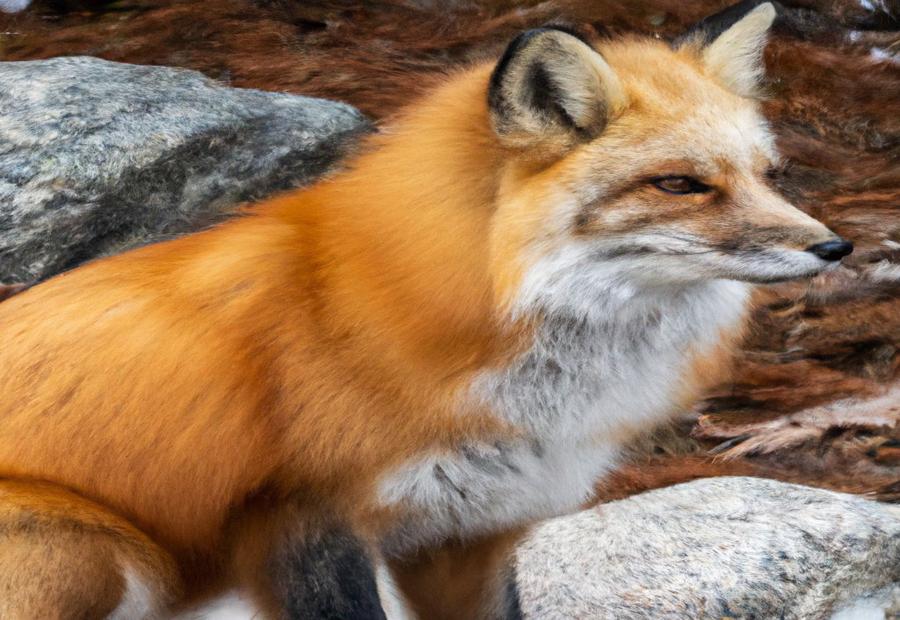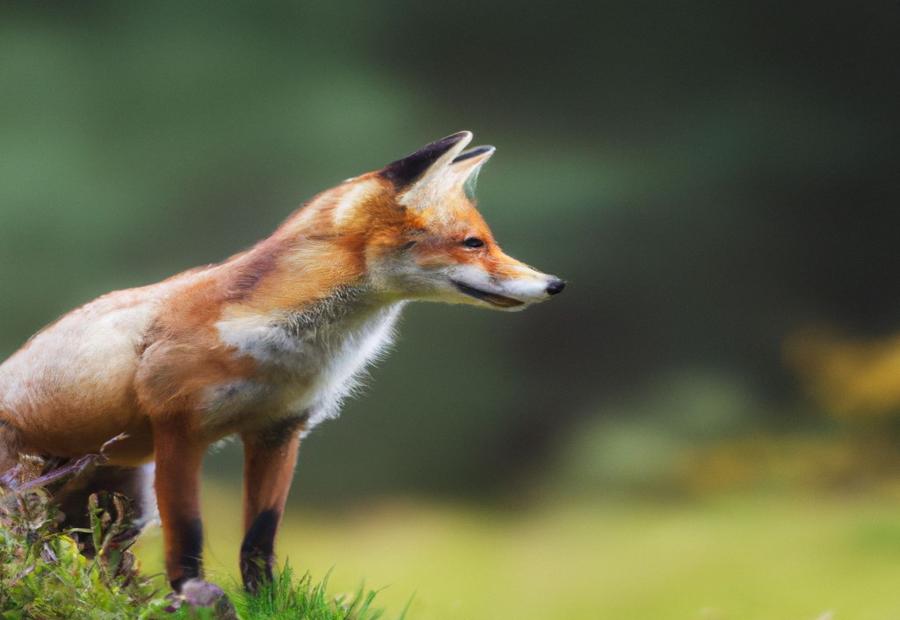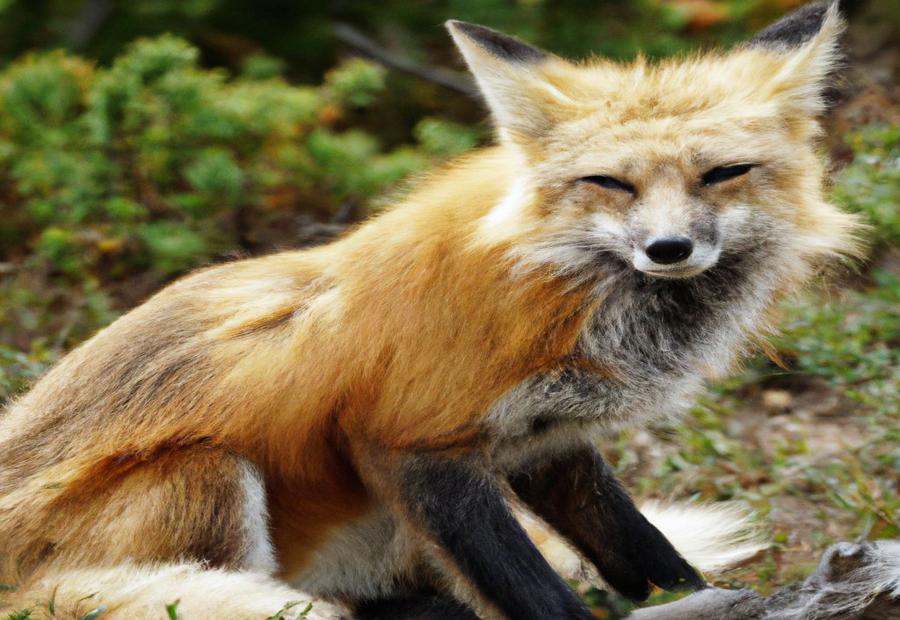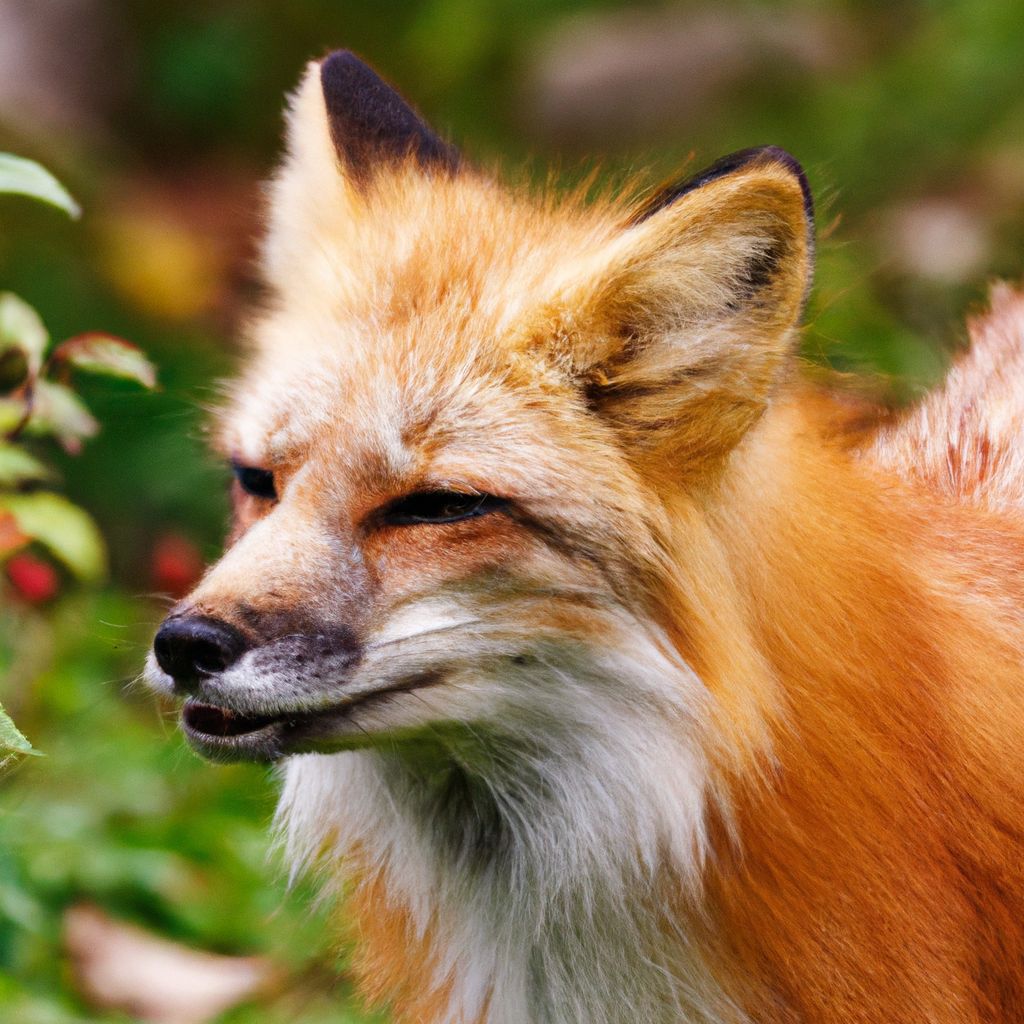Red Fox, a fascinating and adaptable species, can be found in various national parks around the world. These parks provide a suitable habitat for these cunning creatures to thrive and exhibit their distinctive behaviors. Understanding the significance of the red fox in national parks is crucial for conservation efforts and overall ecological balance. This article will delve into the characteristics, behavior, environmental impact, and conservation efforts of red foxes in national parks.
Red foxes possess unique physical and behavioral traits that set them apart from other species. In terms of appearance, they boast a striking reddish fur coat, bushy tail, and a slender body. Their habitat preferences vary, as they can adapt to a wide range of environments, including forests, grasslands, and even urban areas.
The behavior of red foxes in national parks is intriguing to observe. From their feeding habits to social behavior, these creatures exhibit fascinating traits. Red foxes are omnivorous and have a diverse diet that includes small mammals, birds, reptiles, and even fruits and vegetables. They are also known for their social behavior, as they live in family units and form strong bonds within their groups.
Importantly, the presence of red foxes in national parks has an environmental impact. One aspect is their interactions with prey and predators, as they play a role in maintaining prey populations and balancing ecosystems. However, the introduction of red foxes into non-native areas can lead to competition with native species, potentially impacting local biodiversity.
To protect the red fox population and preserve ecological balance, conservation efforts are essential in national parks. These involve monitoring and research to gain insights into their behaviors, population dynamics, and habitat requirements. Management strategies are implemented to mitigate potential conflicts and promote the coexistence of red foxes with other native species.
Alongside the environmental impact, red foxes also offer benefits in national parks. They fulfill an ecological role through their interactions with prey and predators, contributing to the functioning of natural systems. red foxes provide educational opportunities for visitors to national parks, allowing them to learn about these remarkable creatures and their significance in the ecosystem.
By exploring the characteristics, behavior, environmental impact, conservation efforts, and benefits of red foxes in national parks, we can develop a greater appreciation for these intriguing creatures and work towards their conservation and the preservation of their habitats.
Contents
- 1 Characteristics of Red Fox
- 2 Red Fox Behavior in National Parks
- 3 Environmental Impact of Red Fox in National Parks
- 4 Conservation Efforts for Red Fox in National Parks
- 5 Benefits of Red Fox in National Parks
- 6 Frequently Asked Questions
- 6.1 Question 1: Are red foxes considered an endangered species?
- 6.2 Question 2: What are the main predators of red foxes in national parks?
- 6.3 Question 3: How do red foxes communicate and establish territorial boundaries?
- 6.4 Question 4: Do red foxes have a particular color variation?
- 6.5 Question 5: What was the significance of the discovery of Sierra Nevada red foxes in Yosemite National Park?
- 6.6 Question 6: What efforts are being made to preserve the Sierra Nevada red foxes in Yosemite National Park?
Characteristics of Red Fox
Red Foxes, enchanting and elusive creatures, possess unique characteristics that set them apart in the animal kingdom. Delve into the captivating world of these cunning creatures as we explore their appearance and habitat preferences. Discover the mesmerizing beauty of the Red Fox and uncover the habitats they call home. Prepare to be amazed by the wonders of nature and the incredible adaptations of these intriguing animals.
Appearance of a Red Fox
The appearance of a red fox is characterized by its medium-sized body and slender build, along with a bushy tail. Typically measuring between 18 to 35 inches in length, excluding the tail, which can add an additional 12 to 22 inches.
The fur of red foxes varies in color, ranging from reddish-brown to golden, gray, or black, depending on their location. With a white underbelly, throat, and chin, as well as black ears and legs, red foxes possess distinct features.
Their bushy tail, known as a “brush,” is tipped with white and is often held low to the ground. Red foxes have a pointed muzzle and sharp, triangular ears. Their long and slender limbs enable them to move swiftly and with agility.
Adult red foxes have an average weight between 7 and 15 pounds. Male red foxes, referred to as “dogs,” are typically larger than their female counterparts, known as “vixens.”
Understanding the appearance of a red fox is key to identifying and recognizing them in various habitats and environments.
Habitat Preferences
Woodlands: Red foxes have specific habitat preferences and tend to favor woodlands with dense vegetation. This provides them with ample cover from potential predators and enables them to effectively hunt their prey.
Grasslands: In addition to woodlands, red foxes can also be found inhabiting grasslands. These open spaces offer them the ideal environment to hunt small mammals and insects.
Farmlands: One interesting aspect of red foxes is their ability to adapt to human-modified environments, including farmlands. They are able to find a reliable source of food in these areas, which may include small livestock.
Urban areas: The adaptability of red foxes is truly remarkable, as they can even be found in urban areas such as parks and residential neighborhoods. In these settings, they scavenge for food and make use of hiding spots to ensure their survival.
Red foxes exhibit a remarkable versatility in their habitat preferences. They are able to thrive in various environments, including woodlands, grasslands, farmlands, and even urban areas. This adaptability has contributed to their success as one of the most widespread canid species in the world.
Red Fox Behavior in National Parks

Photo Credits: Foxauthority.Com by Mark Robinson
Red Foxes in our national parks exhibit fascinating behavior that is worth exploring. In this section, we’ll delve into their feeding habits and social behavior. Get ready to uncover interesting facts and insights about how these clever animals navigate their environments and interact with one another. From their hunting techniques to their intricate social dynamics, we’ll discover the captivating world of Red Fox behavior in our national parks. To learn more about the Red Fox in national parks, visit the Red Fox in National Parks.
Feeding Habits
The feeding habits of red foxes in national parks vary depending on location and prey availability. And it is crucial to understand these feeding habits for managing their populations and maintaining ecological balance in the parks.
Red foxes are omnivorous animals, meaning they consume both plant and animal matter. They have a diverse diet that includes small mammals, birds, reptiles, amphibians, insects, and fruits. Small mammals, like rabbits, mice, and voles, play a significant role in their diet. These foxes rely on their stealth and agility to hunt and capture prey. They also opportunistically scavenge carrion or take advantage of human food sources when available.
During periods of low prey availability, red foxes store excess food for later consumption. Their keen senses, including excellent hearing and smell, aid them in locating prey, especially underground-living animals like mice. Interestingly, these foxes may exhibit kleptoparasitic behavior by stealing caught prey from other predators.
Studying the diet and feeding behaviors of red foxes enables park officials to develop appropriate conservation and management strategies to ensure the well-being of both the foxes and their habitats.
Social Behavior
The social behavior of red foxes in national parks is truly captivating. These foxes live in small family groups known as “vixens,” consisting of one dominant male and several females. Playful behaviors like chasing and wrestling play a vital role in strengthening social bonds among red foxes. Additionally, they collaboratively raise and protect their young with all vixens participating in their care.
Communication holds significance in the social behavior of red foxes. They employ vocalizations, body postures, and scent marking as means of communication. Vocalizations such as barks, screams, and howls are used during territorial disputes or to alert others.
The social behavior of red foxes can vary depending on their habitat and available resources. In areas with plenty of food, they may form larger social groups. Conversely, in areas with limited resources, red foxes may display more solitary behavior.
To support conservation efforts, comprehending the social behavior of red foxes is crucial. Researchers study their social dynamics to gain insights into population dynamics, reproductive strategies, and overall health. This knowledge aids in developing effective management strategies that balance the needs of red foxes with the preservation of other species.
Environmental Impact of Red Fox in National Parks

Photo Credits: Foxauthority.Com by Eric Smith
The presence of red foxes in our national parks has undeniably left an environmental impact. In this section, we’ll dive into the intriguing dynamics of their interactions as both predator and prey, and how this affects the delicate balance of the ecosystem. Additionally, we’ll explore the competition that arises between red foxes and native species, shedding light on the potential consequences for biodiversity. Get ready to unveil the fascinating insights into the environmental impact of red foxes in our beloved national parks.
Prey and Predator Interactions
Prey and predator interactions play a crucial role in the impact of red foxes in national parks. When considering the significance of these interactions, it is important to keep in mind the following key points:
- The red fox, being a skilled predator, primarily hunts small mammals such as rabbits, mice, and voles. It exhibits opportunistic hunting behavior and has the ability to adjust its diet according to the availability of prey.
- The predation activities of red foxes can have an effect on the population dynamics of their prey species. In areas with a high population of foxes, there may be a decrease in the numbers of small mammals.
- Red foxes also prey on ground-nesting birds like pheasants and grouse. This type of predation can have a negative impact on bird populations, especially in areas where there is limited nesting habitat.
- Larger predators such as wolves and coyotes are known to hunt red foxes. The interactions between these predators can ultimately influence the distribution and behavior of red fox populations.
- The presence of red foxes can also have an impact on the behavior of their prey. Small mammals and birds may alter their foraging patterns or nesting behaviors in response to the presence of a predator, thus leading to changes in the dynamics of the ecosystem.
Understanding the interactions between prey and predator when it comes to red foxes in national parks is of utmost importance in managing their populations and ensuring the balance of the ecosystem. Conservation efforts should focus on carefully monitoring population trends and implementing management strategies that promote the coexistence of both predator and prey species.
Competition with Native Species
Competition with native species is a prominent concern when red foxes inhabit national parks. The presence of red foxes leads to a competition for resources with native species and can have a detrimental impact on the local ecosystem.
- Food competition: Red foxes engage in competition with native predators such as coyotes and bobcats when it comes to seeking food sources like small mammals and birds. This competition has the potential to reduce prey populations and disrupt the natural balance of the ecosystem.
- Habitat competition: Red foxes also compete with native species for suitable habitat. They can thrive in various habitats, including forests, grasslands, and urban areas. As a result, their presence can displace or outcompete native species, leading to a decline in biodiversity.
- Predation competition: Red foxes prey on a variety of animals, including ground-nesting birds and their eggs. This predation has a negative impact on native bird populations, affecting their reproduction and overall abundance.
- Disease competition: Red foxes can carry diseases that can be transmitted to native species. For instance, they may carry parasites like ticks and fleas that affect the health and survival of other animals in the ecosystem.
Efforts to address competition with native species include monitoring red fox populations, conducting research on their impacts, and implementing measures to control their population size. These endeavors play a crucial role in preserving the balance of the ecosystem and safeguarding native species from the adverse effects of competition with red foxes.
Conservation Efforts for Red Fox in National Parks

Photo Credits: Foxauthority.Com by Dylan Mitchell
Conservation efforts for the red fox in national parks are making strides with focused monitoring and research efforts, as well as effective management strategies. Discover how experts are closely studying and gathering vital data to protect the red fox population. Additionally, we’ll explore the proactive measures implemented to ensure the long-term survival of these fascinating creatures within their natural habitats.
Monitoring and Research
Monitoring and research are crucial for effectively managing red fox populations in national parks. Here are some important points to take into account:
– National park authorities consistently conduct monitoring of red fox populations to gain insights into their numbers, distribution, and behavior. This enables them to identify any potential changes or issues.
– Researchers employ various techniques such as radio telemetry and GPS collars to track the movements of red foxes. This helps determine their preferred habitats, home ranges, and interactions with other species.
– Research focused on red fox diet allows us to better understand their foraging habits and their impact on prey populations. By examining prey remains found in scat or through direct observation, researchers are able to determine the variety and quantity of prey consumed.
– Monitoring and research efforts also play a crucial role in assessing the prevalence of diseases among red fox populations. This knowledge is vital in understanding their overall health and the potential for disease transmission to other wildlife species.
In one specific national park in North America, monitoring and research produced an intriguing discovery regarding red fox behavior. Researchers observed red foxes collaborating with ravens to capture prey. The foxes would dig up burrowing animals, providing an opportunity for the ravens to seize the exposed prey. This collaborative hunting strategy serves as a remarkable demonstration of the intelligence and adaptability of the red fox species.
Management Strategies
Management Strategies for Red Fox in National Parks should be based on scientific research and careful monitoring. Effective strategies to consider include:
1. Implementing Population Control Measures: When the red fox population becomes too dense and starts impacting native species, culling programs can help maintain a balance between red fox numbers and conservation efforts.
2. Habitat Management: Creating suitable habitats for native species can reduce competition with Arctic foxes. This involves restoring and maintaining diverse vegetation, providing nesting sites, and managing invasive species.
3. Educating Park Visitors: Promoting awareness about not feeding wildlife, including red foxes, prevents their reliance on human food sources. Educational campaigns can highlight the negative consequences of feeding and emphasize the importance of keeping a safe distance from wildlife.
4. Implementing Predator-Prey Management: Monitoring predator-prey interactions helps identify situations where red foxes may harm vulnerable species. Targeted management strategies can then be implemented to protect the prey species.
5. Collaboration with Research Institutions and Experts: Ongoing research and collaboration with experts provide valuable insights into red fox behavior and ecology. This knowledge informs the development and adaptation of management strategies.
By implementing these management strategies, national parks can conserve native species while allowing red foxes to fulfill their ecological role. Regular review and adaptation of strategies are crucial based on each park’s specific needs and changing red fox populations. Conservation efforts aim to maintain biodiversity, ecological balance, and respect the natural habitats of all species, including the red fox.
(Note: The information provided is specific to managing red foxes in national parks and may not apply to other settings or contexts.)
Benefits of Red Fox in National Parks
The red fox is more than just a beautiful creature roaming in national parks. In this section, we will uncover the incredible benefits they bring to these natural landscapes. From their vital ecological role to the amazing educational opportunities they provide, get ready to explore the diverse advantages that the presence of red foxes brings to our national parks.
Ecological Role
The Red Fox plays a crucial ecological role in maintaining the balance of the ecosystem in national parks.
They regulate the population of small mammals, such as rodents and rabbits, which helps maintain a healthy balance.
Red Foxes also contribute to seed dispersal by consuming fruits and berries, thereby allowing for plant regeneration and diversity of vegetation in national parks.
As predators, they occupy an essential position in the food chain, helping to maintain the equilibrium of the ecosystem. Red Fox in National Parks
The Red Fox’s ecological role is vital in preserving natural habitats and preventing imbalances in the ecosystem, thereby contributing to the overall health and diversity of plant and animal species in national parks.
It’s important to acknowledge and appreciate the Red Fox’s ecological role to ensure the continued conservation of this species in national parks.
Educational Opportunities
Educational Opportunities provided by red foxes in national parks:
- Observation: Red foxes allow visitors to observe and learn about their behavior and characteristics. By watching their interactions with other animals and their environment, visitors can gain insights into the natural world.
- Biodiversity education: Red foxes contribute to the biodiversity of national parks, showcasing the variety of species within these protected areas. Park rangers and educators can use red foxes as examples to teach visitors about the importance of biodiversity and conservation.
- Life cycle lessons: Red foxes go through reproduction, raising young, and hunting stages in their life cycles. Educational programs can focus on these stages to teach visitors about the biology and ecology of red foxes.
- Adaptation discussions: Red foxes have unique adaptations that help them survive and thrive in their habitats. Visitors can learn about these adaptations, such as their excellent hearing and camouflage ability, and understand how animals adapt to their environments.
- Role in the ecosystem: Red foxes play a vital role in the ecosystem as predators controlling populations of small mammals. Education programs can highlight the ecological significance of red foxes and their impact on the balance of the ecosystem.
In addition to these educational opportunities, visitors can participate in guided tours, workshops, and interactive exhibits to enhance their knowledge about red foxes. Engaging activities like scavenger hunts or photography contests can also be organized to make learning about red foxes more enjoyable and memorable for visitors. By taking advantage of these educational opportunities, people can develop a deeper appreciation for red foxes and the natural environment they inhabit.
Frequently Asked Questions
Question 1: Are red foxes considered an endangered species?
Answer: No, red foxes are not considered endangered or threatened.
Question 2: What are the main predators of red foxes in national parks?
Answer: Red foxes can be eaten by coyotes, mountain lions, and large predatory birds.
Question 3: How do red foxes communicate and establish territorial boundaries?
Answer: Red foxes use scent marking to communicate and establish territorial boundaries, with males producing a strong musky odor during mating season.
Question 4: Do red foxes have a particular color variation?
Answer: Yes, red foxes have variations in coat color, such as the melanistic cross fox with black legs and black face, and the all black fox.
Question 5: What was the significance of the discovery of Sierra Nevada red foxes in Yosemite National Park?
Answer: The discovery of Sierra Nevada red foxes in Yosemite National Park was significant because it confirmed the presence of this elusive species, which was believed to be extinct in the park since 1916.
Question 6: What efforts are being made to preserve the Sierra Nevada red foxes in Yosemite National Park?
Answer: Biologists in Yosemite National Park are deploying cameras and hair snares for DNA analysis to gather vital information about the Sierra Nevada red foxes. They are also collaborating with various agencies, academic institutions, and private organizations to preserve the foxes’ ecological legacy as a native species in California and a resident of Yosemite National Park.


